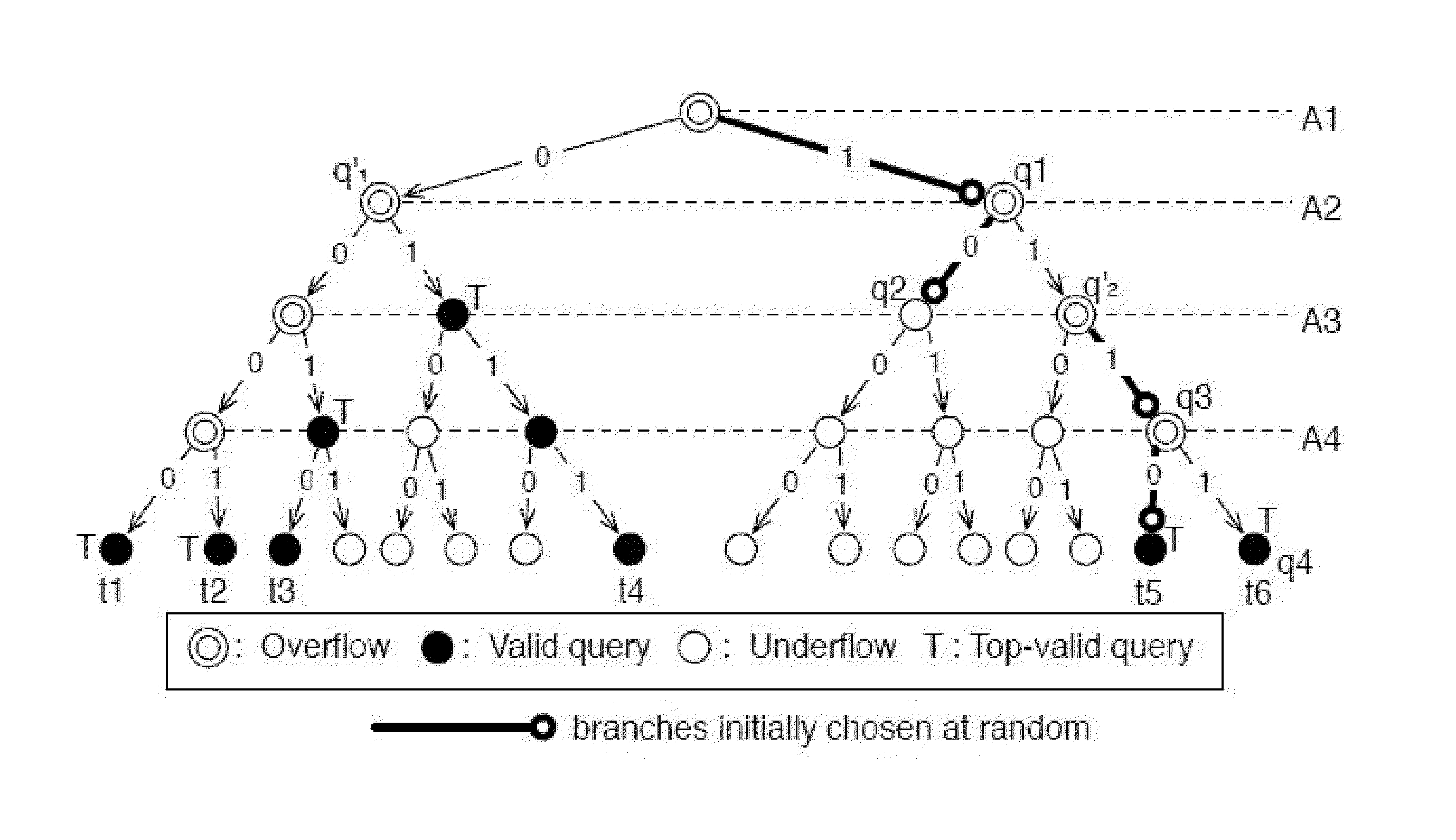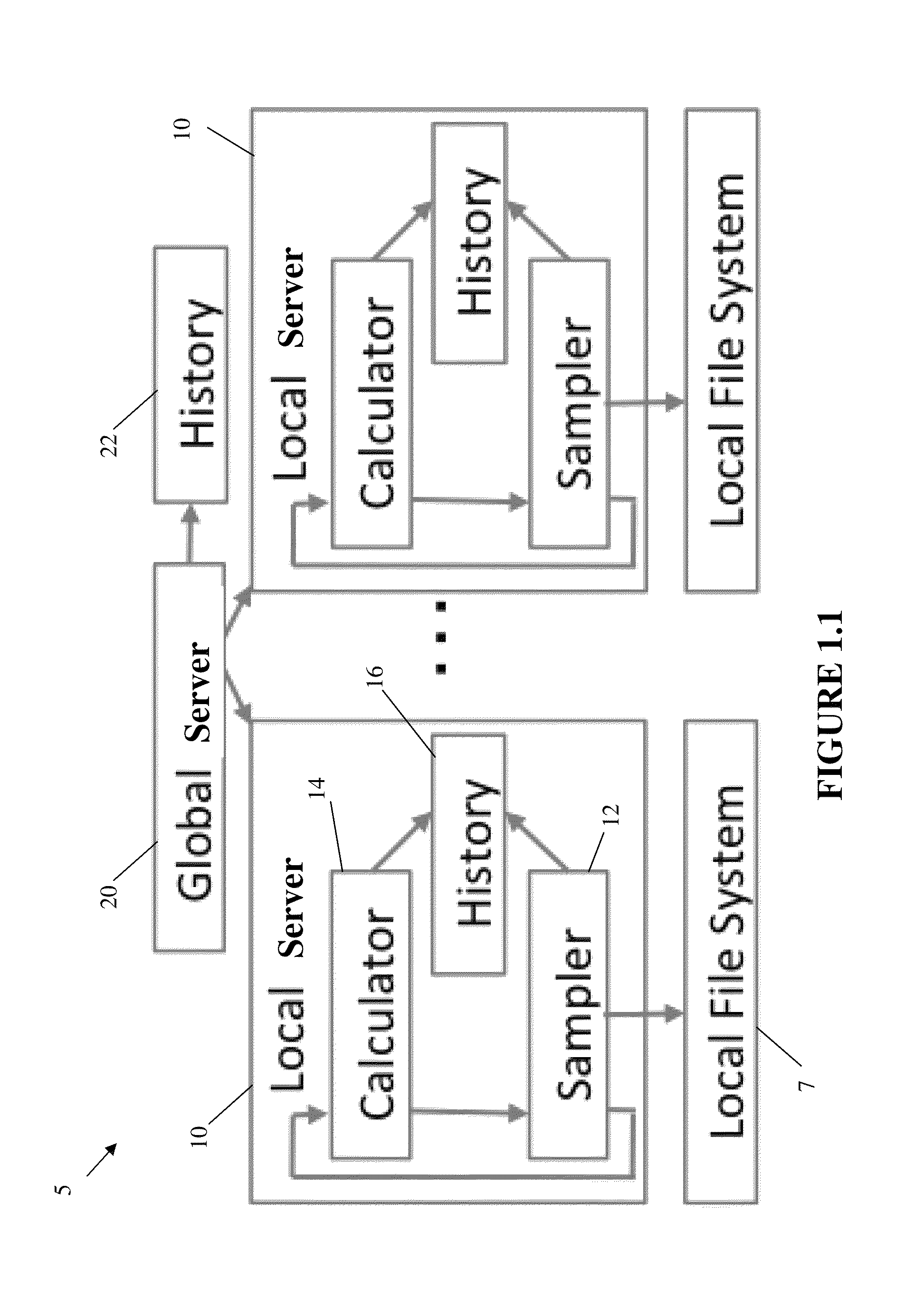Just-in-time analytics on large file systems and hidden databases
a file system and database technology, applied in the field of just-in-time analytics on large file systems and hidden databases, can solve the problems of lack of global view (i.e., high-level statistics), inability to provide just-in-time analytics, etc., to achieve easy addition, easy to issue through the web interface, and accurate aggregate estimation
- Summary
- Abstract
- Description
- Claims
- Application Information
AI Technical Summary
Benefits of technology
Problems solved by technology
Method used
Image
Examples
case 1
[0524]
[0525]First consider the case where HYBRID-SPACE did not terminate before 4,036 queries were issued. Let wB and wT be the number of rounds RANDOM- and RANDOM-COUNT-SPACE were performed, respectively. Since r1=0, the number of discovered domain values is at least wB−1. Since A1, . . . , Am−1 each has 10 domain values, an RANDOM-COUNT-SPACE shrinking process issues at most 9(m−1) queries. Thus, the wB+wT finished rounds consume at least 4036−(9(m−1)−1)=4046−9m queries because the final unfinished round could have issued at most 9(m−1)−1 queries. As such,
c·wB+9(m−1)·wT≧4046−9m. 7)
[0526]where c is the average number of queries issued by a round of RANDOM-SPACE during the execution. Since r2=0, wB≧wT. Thus, (c+9(m−1))·wB≧4046−9m. If HYBRID-SPACE did not discover at least 46 values, then wB≦46 and therefore c≧(3956 / 46)−9(m−1)=5.
[0527]A key step now is to prove that c≧5 indicates an absolute recall of at least 500,000. This is enabled by the following theorem which illustrates a pos...
case 2
[0536]
[0537]Now consider the other case where HYBRID-SPACE terminates before 4,036 queries were issued. This indicates that the last round of RANDOM-COUNT-SPACE returns no new domain value. Let the absolute recall be α·n. With each round of RANDOM-COUNT-SPACE, the probability for the (1−α)·n “unrecalled” tuples to be retrieved is 1−α. Thus, with Bayes' theorem, the posterior probability for α<50% given the empty discovery of the last round of RANDOM-COUNT-SPACE is
[0538]Pr{α<50%|emptydiscovery}<1 / 2·1 / 2∫01pⅆp=1 / 2.9)
[0539]That is, the median absolute recall is at least 500000. In summary of both cases, HYBRID-SPACE either discovers at least 46 values, or has a median absolute recall of 500000.
[0540]Generic Performance Guarantee:
[0541]More generally, we have the following algorithm:
[0542]THEOREM 3.4.2. For a query budget of d over a top-k interface, HYBRID-SPACE achieves either an absolute coverage of mo values, or a median absolute recall of at least
[0543]min(k·∏i=1σVi,12...
PUM
 Login to View More
Login to View More Abstract
Description
Claims
Application Information
 Login to View More
Login to View More - R&D
- Intellectual Property
- Life Sciences
- Materials
- Tech Scout
- Unparalleled Data Quality
- Higher Quality Content
- 60% Fewer Hallucinations
Browse by: Latest US Patents, China's latest patents, Technical Efficacy Thesaurus, Application Domain, Technology Topic, Popular Technical Reports.
© 2025 PatSnap. All rights reserved.Legal|Privacy policy|Modern Slavery Act Transparency Statement|Sitemap|About US| Contact US: help@patsnap.com



